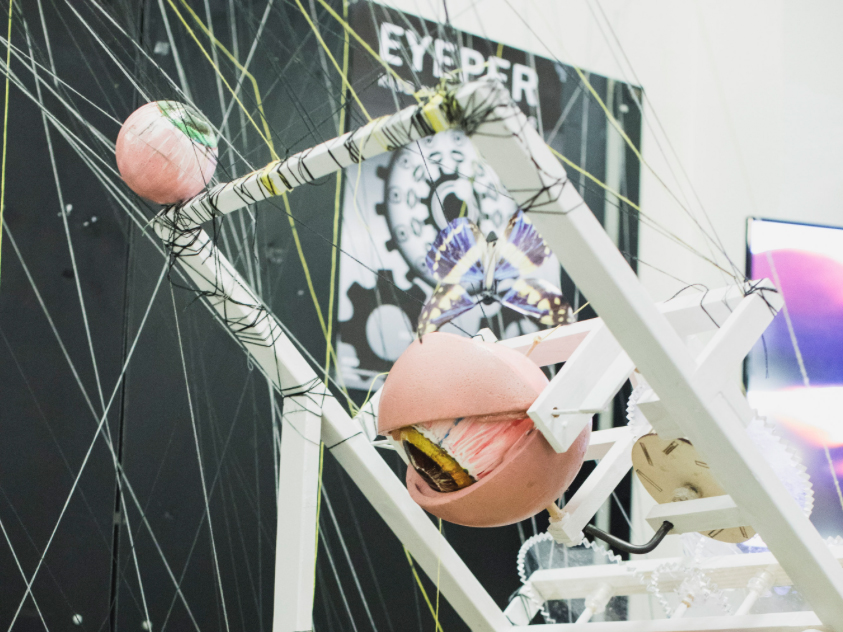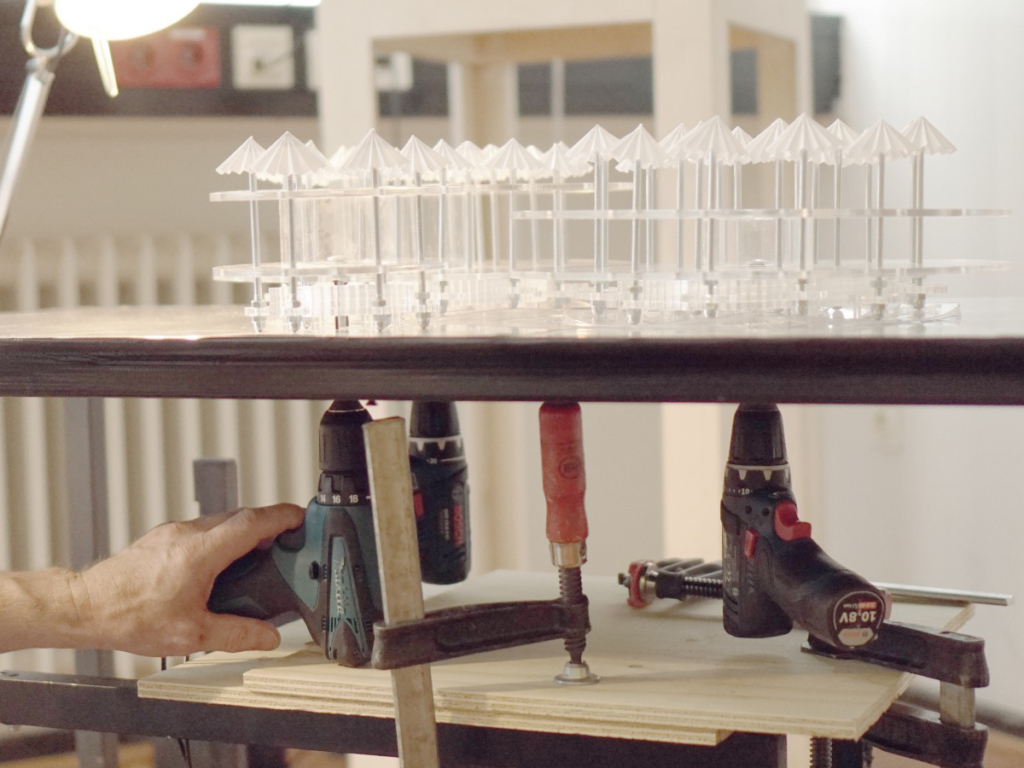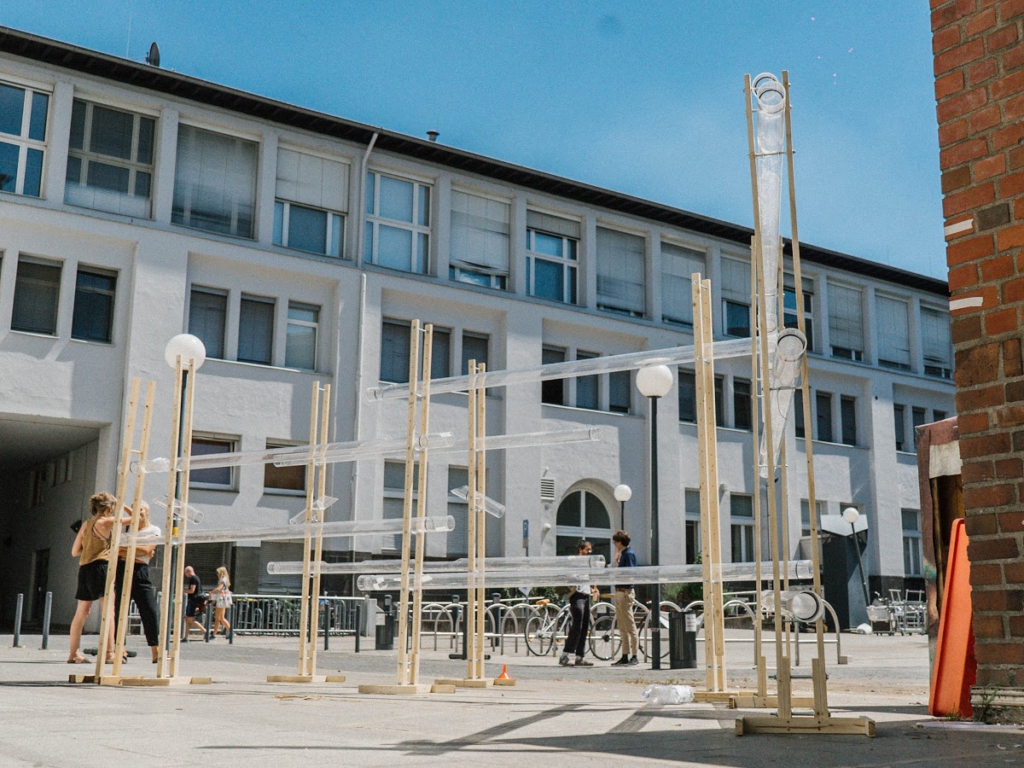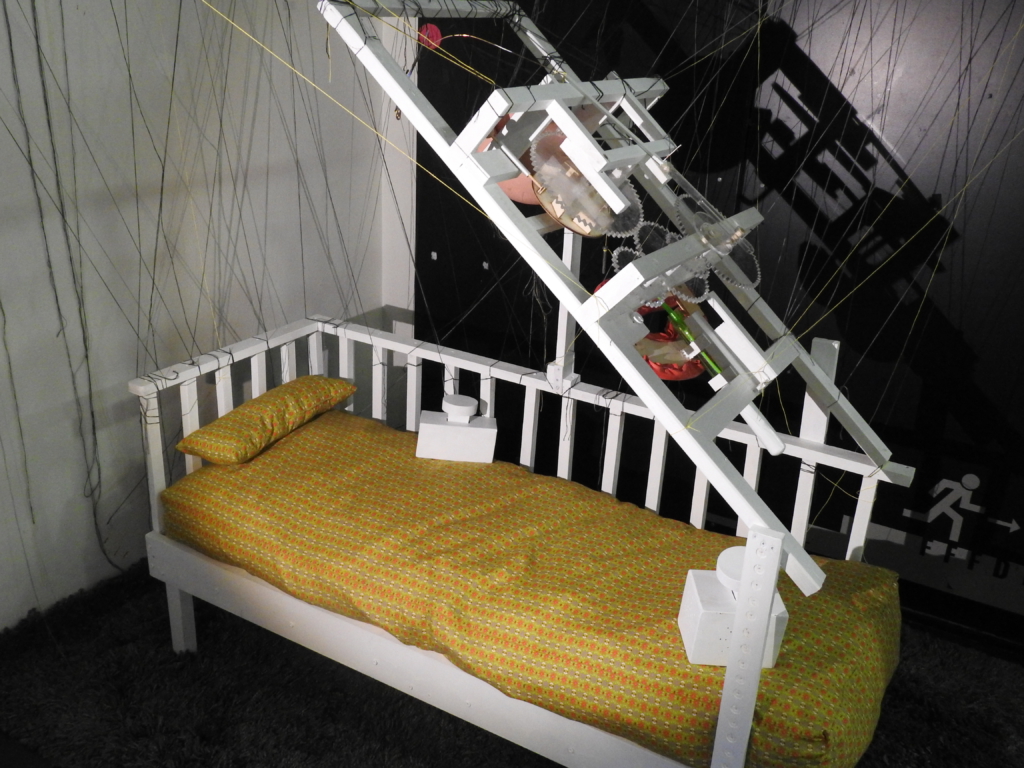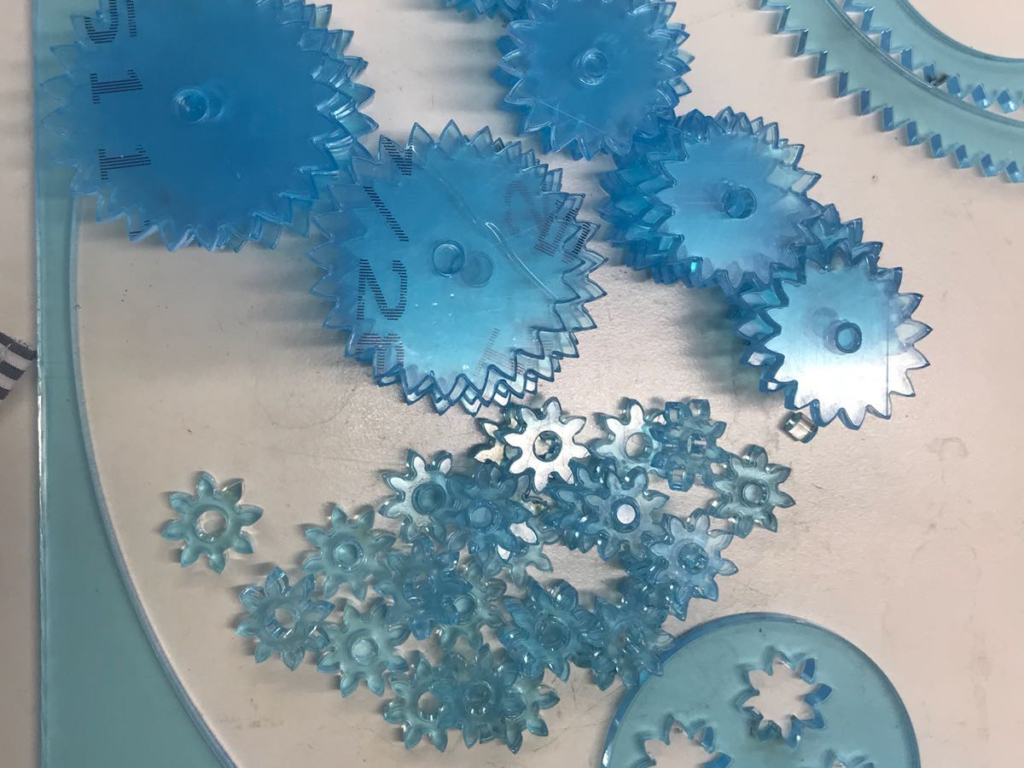In this collaborative project BAs and MAs students created moving hyper machines that use the idea of chain reaction to accomplish a very simple task in a complicated manner. A definition of what a hyper machine in context of kinetic independency might have to supply here, was part of this 16 weeks journey.
The group of students researched in teams kinetic aspects, prototyped mechanisms and structures throughout this class in integrating processes. They investigated on Rube Goldberg and Leonardo da Vinci machines and principles, touched the idea of a perpetuum mobile or Duchamps’ and Calder’s constructions while learning about the history of kineticism – an international movement between 1920 and 1970 which refers to art of both real and apparent motion – and discussing the found principles. They finally designed their own hyper machine as a kinetic plastic, moving machine, contraption, invention, device or apparatus themselves. Thereby they had to investigate on different aspects of perfomativity and motion design on a physical production basis in order to present a machine performance as the final resulting installation.
4 teams realized the following installations:
Motion Patterns: Christian Nufer, Dorsa Javaherian, Gabriela Rueda Medellin, Reina Nakajima, Jost Goldschmitt,
Eyeper Machine: Dusan Jorge Catricheo Maulen, Lixing Yang, Yin Ying, Steven Karl Josef Wenzler
TOI: Hannah Malena Baldauf, Michael Anthony Mangan, Te-Wei Huang, Ting Wei Chang, Shizuru Nabu
Lumia: Martin Samuel Simpson
This class was initiated and supervised by joined forces of the areas of expertise Image & Motion / Prof. Nina Juric and Department Production Technology / Prof. Wolfgang Laubersheimer, supported with input of Jiajia Chen, Associate Professor and Service & Product Designer, aswell as Vice Dean of School of Industrial Design of Nanjing University of the Arts, China. It was exhibited on the KISD Parcours 2019, 18.-22. July 2019.
Have a look on an compendium of the documentations showing the work and process.


